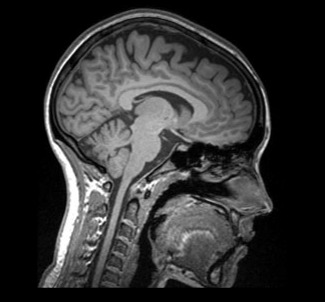Discovery of ADHD-related alterations in the brain's reward system

Until now attention-deficit/hyperactivity disorder (ADHD) was related to alterations in the brain affecting attention and cognitive processes. Researchers at UAB and the Vall d'Hebron University Hospital for the first time have discovered anomalies in the brain's reward system related to the neural circuits of motivation and gratification. In children with ADHD, the degree of motivation when carrying out an activity is related to the immediacy with which the objectives of the activity are met. This would explain why their attention and hyperactivity levels differ depending on the tasks being carried out.
Susanna Carmona, researcher at the Cognitive Neuroscience Unit of the UAB Department of Psychiatry and Legal Medicine (URNC-IAPS-Hospital del Mar), has worked in collaboration with clinical researchers of the Vall d'Hebron University Hospital and CRC Corporació Sanitària on the first research which relates the structure of the brain's reward system, the ventral striatum, with clinical symptoms in children suffering from ADHD.
Models describing the origin of ADHD tend to emphasise the relevance of attention processes and of the cognitive functions which guide our mental processes in achieving proposed objectives. Nevertheless, recent research has focused on neural gratification/pleasure circuits, which can be found in what is known as the brain's reward system, with the nucleus accumbens as the central part of this system.
The nucleus accumbens is in charge of maintaining levels of motivation when commencing a task and continues to do so until reaching what experts name the "reinforcement", the proposed objective. This motivation can be maintained throughout time, even when the gratification obtained is not immediate. However, in children with ADHD motivational levels seem to drop rapidly and there is a need for immediate reinforcements to continue persisting in their efforts.
In this study, researchers selected a sample of 84 participants aged 6 to 18 years and divided them according to presence of ADHD symptoms, with one experimental group of 42 children with ADHD and one control group of 42 children with no signs of mental or behavioural anomalies, paired by sex and age. Magnetic resonance images were taken of all participants to view the structure of their brains. Of these images, the cerebral region corresponding to the ventral striatum, which includes the nucleus accumbens, was demarcated.
Differences in the structure of the ventral striatum - particularly on the right-hand side - could be seen between those with ADHD and those without the disorder. Children with ADHD exhibited reduced volumes in this region. These differences were associated with symptoms of hyperactivity and impulsiveness.
The obtained data corroborate results from previous studies carried out with animals: the importance of the reward system, as well as the relation between nucleus accumbens, impulsive behaviour and the development of motor hyperactivity. This leads researchers to consider that ADHD is not only caused by brain alterations affecting cognitive processes, but also by anomalies which cause motivational deficiencies. This would explain the imbalance in levels of attention and hyperactivity in a child with ADHD depending on his or her motivation when engaged in a specific task and the immediacy of the gratification/pleasure while carrying it out.
References
"Ventro-Striatal reductions underpin symptoms of Hyperactivity and impulsivity in Attention-Deficit/Hyperactivity disorder". Carmona S. et al. Biol. Psychiatry, 66: 972-977, 2009.

